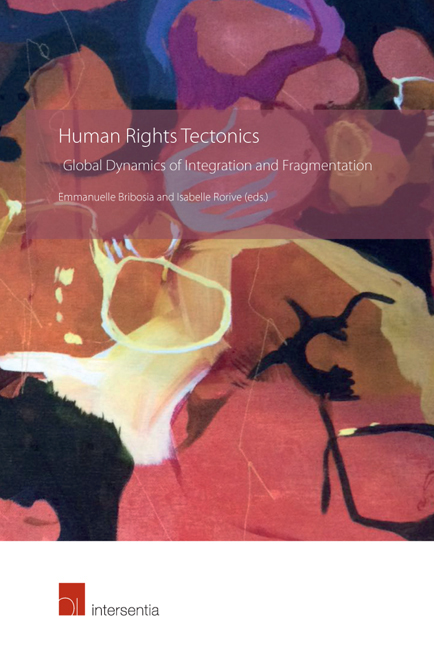Book contents
- Frontmatter
- Foreword
- Contents
- List of Cases
- List of Contributors
- Introduction to Human Rights Tectonics
- PART I PROMISES AND CHALLENGES OF AN INTEGRATED APPROACH TO HUMAN RIGHTS
- The Formation of a Common Law of Human Rights
- UN Special Procedures: System Puppets or User's Saviours?
- The African Court on Human and Peoples’ Rights: A Uniquely Equipped Testbed for (the Limits of) Human Rights Integration?
- The Role of Non-Judicial Bodies in Human Rights Implementation
- PART II HUMAN RIGHTS TECTONICS THROUGH AN ISSUE-BASED APPROACH
- PART III HUMAN RIGHTS DYNAMICS IN EUROPE
- About the Editors
The Formation of a Common Law of Human Rights
from PART I - PROMISES AND CHALLENGES OF AN INTEGRATED APPROACH TO HUMAN RIGHTS
Published online by Cambridge University Press: 31 January 2019
- Frontmatter
- Foreword
- Contents
- List of Cases
- List of Contributors
- Introduction to Human Rights Tectonics
- PART I PROMISES AND CHALLENGES OF AN INTEGRATED APPROACH TO HUMAN RIGHTS
- The Formation of a Common Law of Human Rights
- UN Special Procedures: System Puppets or User's Saviours?
- The African Court on Human and Peoples’ Rights: A Uniquely Equipped Testbed for (the Limits of) Human Rights Integration?
- The Role of Non-Judicial Bodies in Human Rights Implementation
- PART II HUMAN RIGHTS TECTONICS THROUGH AN ISSUE-BASED APPROACH
- PART III HUMAN RIGHTS DYNAMICS IN EUROPE
- About the Editors
Summary
A silent revolution has taken place since the 1980s in the world of human rights. The revolution has two inter-related dimensions. First, in the interpretation of human rights instruments, the pendulum has shifted from a focus on literal interpretation and the original intention of the drafters to a focus on contextual factors, by which the judge ensures the evolution of human rights doctrine to changing circumstances. Second, and more recently, whereas in the past the bodies tasked with the enforcement of human rights law based their assessment on the particular instrument on the basis of which they were established and that defined their jurisdiction, whether that instrument was an international treaty or a domestic legislative or constitutional instrument, they now increasingly refer to each other's case law. They were working in relative isolation from one another; they are now all participants in the shaping of the common law of human rights.
This contribution takes stock of the first of these developments and it examines in greater detail the significance of the second. It proceeds in six steps. It first describes the origins of the development of human rights law in the form of a human rights jus commune (2). It then distinguishes this phenomenon from other scenarios in which human rights bodies refer to one another, but where such cross-references have other justifications and thus do not illustrate the phenomenon of human rights jus commune as such; this is the case, in particular, where comparative law analyses make it possible to identify the emergence of a consensus on how a certain issue should be addressed (in which case the case law is treated as an empirical fact rather than as normative authority) or where one body refers to the views expressed by another body, which is established in order to provide an authoritative interpretation of the instrument applied (3). It then highlights what is specific about the development of a human rights jus commune, showing, in particular, how this can strengthen the legitimacy of human rights adjudication, allowing judicial and non-judicial human rights bodies to move together and faster in the protection of human rights (4).
- Type
- Chapter
- Information
- Human Rights TectonicsGlobal Dynamics of Integration and Fragmentation, pp. 3 - 40Publisher: IntersentiaPrint publication year: 2018



